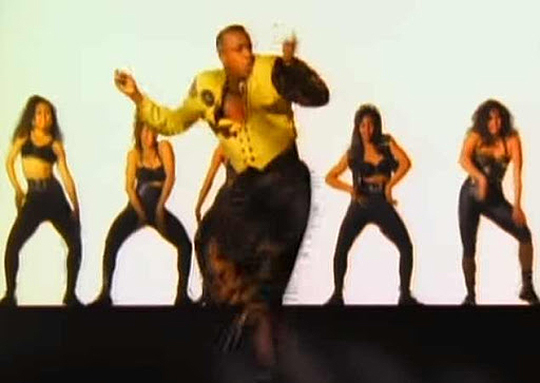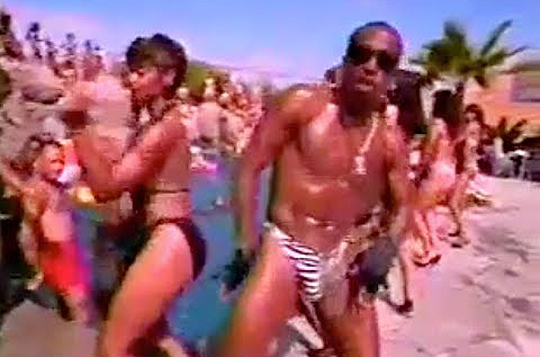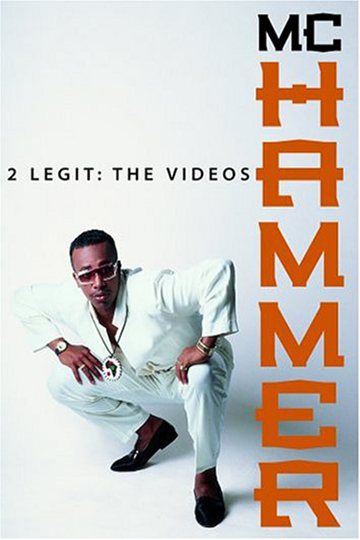What’s It About
“MC Hammer – Too Legit: The Videos” is a comprehensive music video collection that showcases the visual extravagance and innovative choreography that helped define MC Hammer’s unprecedented crossover success in the early 1990s. Released on DVD in 2002 by EMI/Capitol Records, this compilation preserves the spectacular visual component of Hammer’s legacy that was as crucial to his popularity as his music itself. The collection features approximately 15 of Hammer’s most iconic music videos spanning his commercial peak from 1990-1993, centered around his multi-platinum albums “Please Hammer Don’t Hurt ‘Em” and “Too Legit to Quit.” The compilation presents these videos in chronological order, documenting Hammer’s artistic evolution and his impact on hip-hop’s visual language. The collection is anchored by Hammer’s most famous videos, including:
“U Can’t Touch This” – The breakthrough hit featuring Hammer’s signature parachute pants and distinctive side-to-side shuffle, set in a minimalist industrial space that emphasizes the dancing
“2 Legit 2 Quit” – The epic 15-minute mini-movie featuring cameos from sports stars and celebrities, including James Brown, Danny Glover, Tony Danza, and various NFL players
“Pray” – The spiritually-themed video mixing gospel elements with hip-hop choreography
“Here Comes the Hammer” – Showcasing Hammer’s dance troupe in full force with their synchronized movements
“Addams Groove” – The tie-in video for “The Addams Family” film that merged Hammer’s style with the gothic aesthetic of the movie
“Pumps and a Bump” – His controversial later video that attempted to showcase a more adult image
What makes this collection particularly valuable is that it documents the scale and ambition of Hammer’s visual presentations. His videos weren’t just promotional tools but elaborate productions featuring dozens of dancers, complex choreography, multiple costume changes, and high-concept narratives—all elements that influenced countless artists who followed. The DVD reportedly included minimal bonus features—a brief interview segment with Hammer reflecting on his video concepts and a text-based biography—but the videos themselves represent an important chapter in music video history, capturing the moment when hip-hop’s visual presentation reached new heights of mainstream production value.



Why It’s Gone
The DVD was released during a transitional period when music video compilations were becoming less commercially viable as MTV reduced its music video programming. This likely resulted in a relatively small production run. The early 2000s saw major restructuring within record companies as they grappled with digital disruption. EMI/Capitol, Hammer’s former label, underwent significant changes during this period, affecting their catalog management. Music videos involve multiple layers of rights—the recording, the composition, the visual elements, and performer rights. As these rights potentially changed hands through various corporate mergers and acquisitions, reissuing the collection became increasingly complicated. As Hammer’s commercial relevance waned in the late 1990s and early 2000s, major labels were less incentivized to keep his catalog products in active distribution. The DVD was released just as physical media was beginning its long decline, reducing the likelihood of reissues. The original 2002 DVD is long out of print with no subsequent reissues. Secondary market copies occasionally surface on eBay or similar platforms, often commanding prices of $50-100+ for sealed copiesNo Blu-ray or digital HD remaster has ever been released. The videos are not available as a complete collection on any streaming platform. Individual videos appear sporadically on YouTube, often in poor quality, unofficial uploads that are subject to removal for copyright violations. Official artist channels and label channels like Vevo feature only Hammer’s biggest hits, not the complete visual catalog. Music video streaming services like Apple Music’s video section or Tidal’s video features include only a handful of Hammer’s most famous videos. No comprehensive official streaming home exists for the complete collection. The unavailability of “Too Legit: The Videos” represents a significant gap in accessible hip-hop history. Hammer’s videos were groundbreaking in several ways. They helped establish hip-hop as a visually spectacular art form with mass appeal. They showcased Black choreography and dance innovation on an unprecedented scale. They demonstrated how hip-hop artists could create distinctive visual brands through consistent aesthetic choices. They represented some of the biggest-budget music videos of their era, changing industry expectations. The difficulty in accessing these videos highlights a broader issue in music video preservation. Unlike films, which benefit from established archival practices and regular reissues, music videos, despite their cultural impact, often lack systematic preservation efforts, particularly for Black artists whose work predates the digital streaming era. For fans, scholars, and new generations interested in understanding hip-hop’s visual evolution, the continued unavailability of “Too Legit: The Videos” represents not just a missing commercial product but a gap in the publicly accessible record of an art form that significantly shaped contemporary visual culture.


